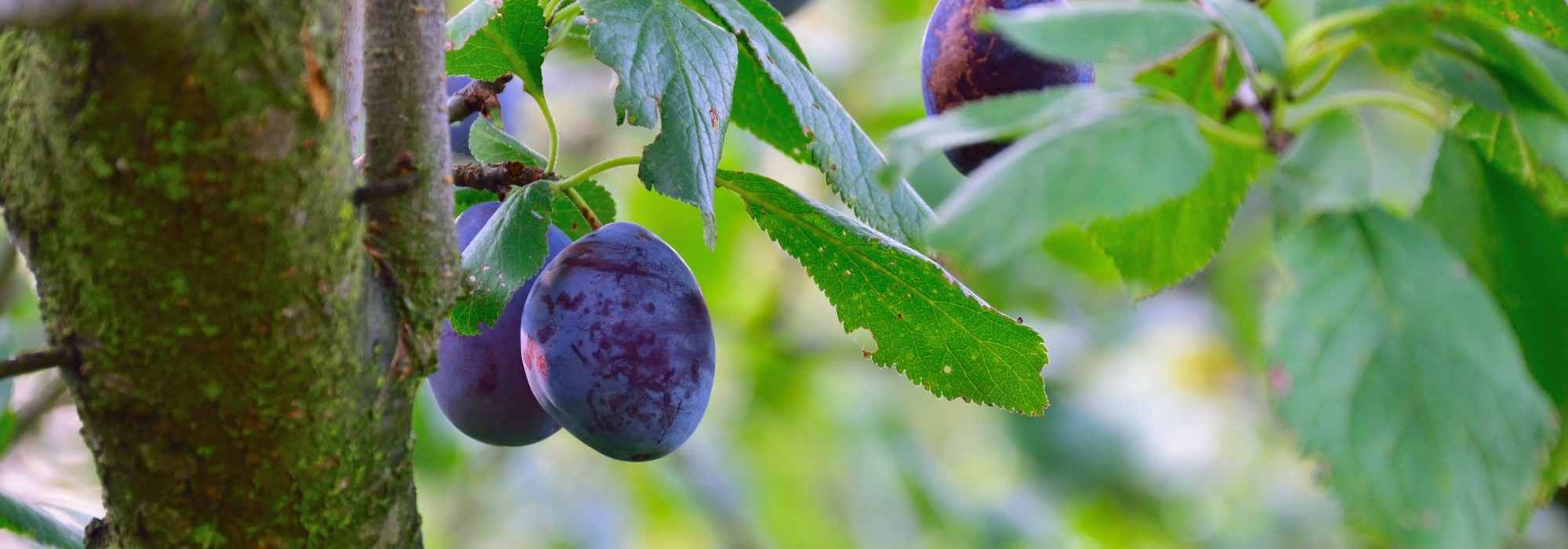
Plum and mirabelle plum trees: best varieties
Discover 8 delicious, productive varieties
Contents
The plum tree (Prunus Domestica) is one of the most common fruit trees in our gardens! It produces, depending on variety, quetsches, mirabelles or Reine-Claude. There are dozens of varieties of plum trees, often self-fertile (not requiring a pollinating variety), enabling everyone to harvest sweet, fragrant fruits in shades of green, yellow, red or almost black-purple. Harvests take place from mid-June for the earliest and until mid-September for late plums. Perfectly hardy, the plum tree tolerates temperatures down to -15°C and can be planted throughout France. Plant it in full sun, avoiding areas too exposed to north and east winds in the coldest regions. In those regions, favour semi-early or semi-late varieties to avoid spring frosts that could jeopardise plum harvests, although this is rarely the case.
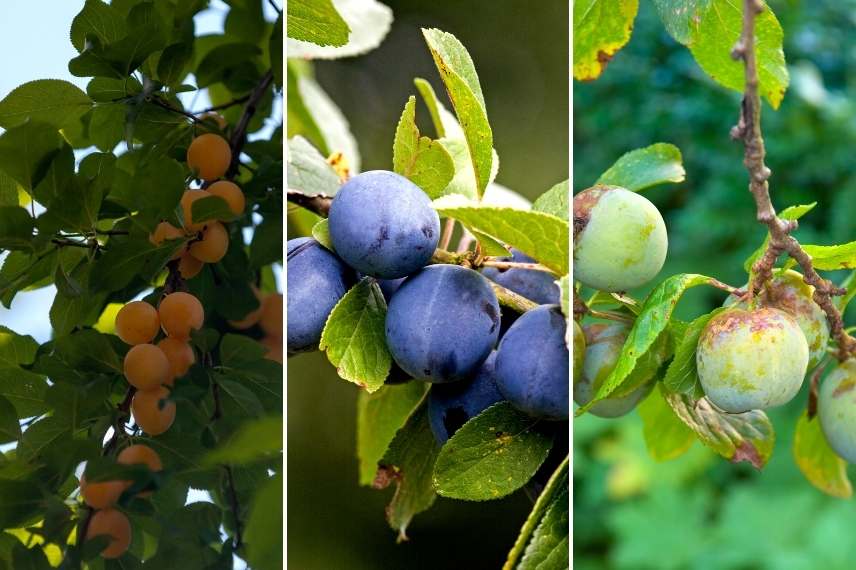
Mirabelles, quetsche and Reine-Claude plums
Our tips will help you choose from our range the plum tree best suited to your garden or even your terrace!
→ And, to learn everything about plum tree cultivation, discover our advice sheet: Plum tree – planting, pruning and maintenance
Plum 'Reine Claude d'Oullins'
This is a vigorous plum variety with a handsome, semi-early but spreading crop from late July to August. It delights with beautiful round plums 4 to 4.5 cm in diameter, canary yellow blushed with pink at ripeness. Flesh is semi-fine, semi-tender, juicy, sweet and fragrant. Self-fertile, plum ‘Reine-Claude d’Oullins’ is the best pollinating plum for other golden Reine-Claude varieties. Well resistant to brown rot (the fungus that rots stone fruits), its fruits do not drop at ripeness, an advantage that also makes cultivation possible in windy sites.
Plum tree 'Mirabelle de Metz'
This very old variety of plum tree produces mirabelles abundantly and regularly. Semi-early, ripening in mid-August, it produces golden-yellow fruits, tinged with red in the sun, about the size of a cherry. Their flesh is very fine, highly aromatic, sweet, and reveals a delicious honey flavour. Although self-fertile, fruiting of the Plum ‘Mirabelle de Metz’ will be improved by planting a pollinating variety nearby such as Reine‑Claude or Reine‑Claude ‘d’Althan’. It is disease-resistant and well suited to north-eastern climates of our country, which experience cold winters as well as hot summers.
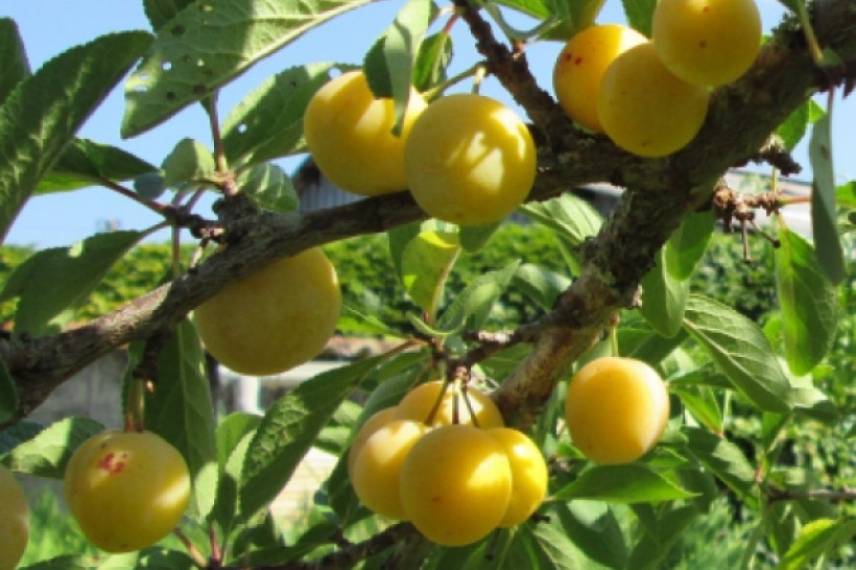
Plum ‘Mirabelle de Metz’
Discover other Plum Trees
View all →Available in 1 sizes
Available in 0 sizes
Available in 0 sizes
Available in 0 sizes
Available in 1 sizes
Available in 2 sizes
Available in 1 sizes
Available in 1 sizes
Available in 2 sizes
Plum tree 'Reine Claude Dorée' or 'Reine Claude Verte'
Here is a mid-late variety: its fruits reach ripeness around mid-August. It has good productivity, but sometimes irregular. It produces large round plums 4 cm in diameter, golden at ripeness. Their flesh is juicy and firm, sweet and very fragrant. They are excellent eaten fresh, made into jam, preserved in syrup or used in tarts. ‘Reine-Claude dorée’ or ‘Reine Claude Verte’, under synonymous names, is not self-fertile and requires the presence of another plum nearby such as Reine Claude d’Oullins, Reine Claude ‘tardive de Chambourcy’ or ‘Mirabelle de Nancy’ to fruit well.
It is a variety somewhat sensitive to fruit splitting before ripeness but not to monilia (a fungus responsible for fruit rot); however it is tolerant to Bark-Split, which is the disease of bark fissures.
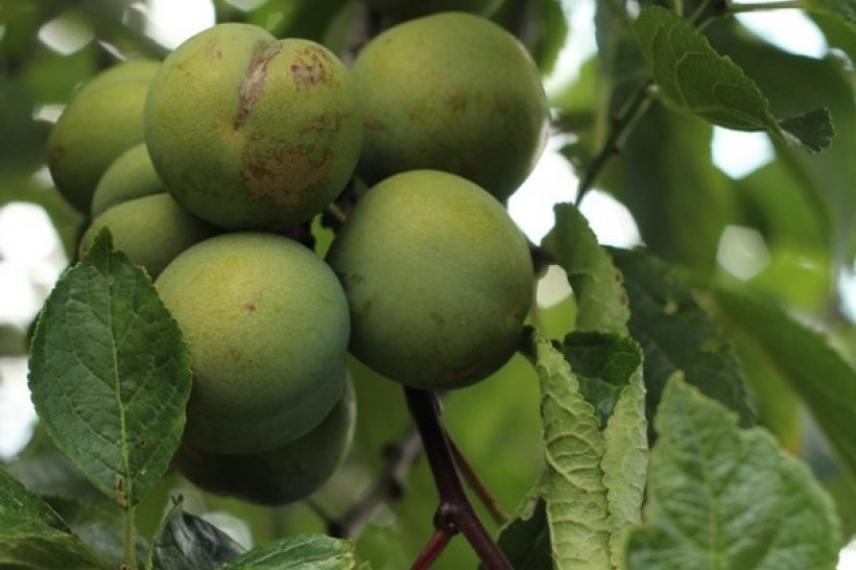
Plum tree Reine-Claude verte
Plum tree 'Mirabelle de Nancy'
Hardy beyond -15°C, robust, this plum tree resists cold and disease: it is one of the most prized varieties in regions with harsh winters. It is also capable of growing in calcareous soil, unlike other plum trees that prefer slightly acidic soil with low limestone content. It is a self-fertile plum tree, not requiring other plum trees for pollination. However, to improve fruiting you can pair it with a ‘Reine Claude’ plum tree. Semi-early harvest occurs in August–September. Very productive, ‘Mirabelle de Nancy’ produces small yellow-orange fruits, 3–4cm in diameter, that separate very well from the stone (handy for making tarts and cakes!). Its very sweet mirabelles have an exceptional honey-like fragrance.
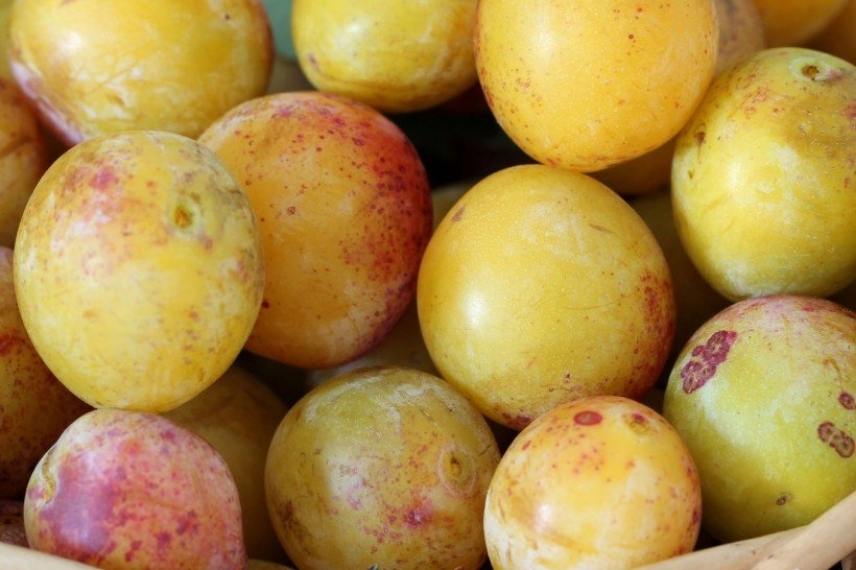
Mirabelles de Nancy
Plum tree 'Quetsche d’Alsace'
This is a plum tree specific to Alsace and Lorraine, cultivated in France for a very long time. It is a mid-late, very productive and robust variety. In early September, ‘Quetsche d’Alsace’ produces elongated purple fruits, so iconic in eastern France! They have a melting, not very juicy, slightly tart flesh, characteristic of quetsches. It is a self-fertile variety that does not require another plum tree pollinator to improve fruit set.
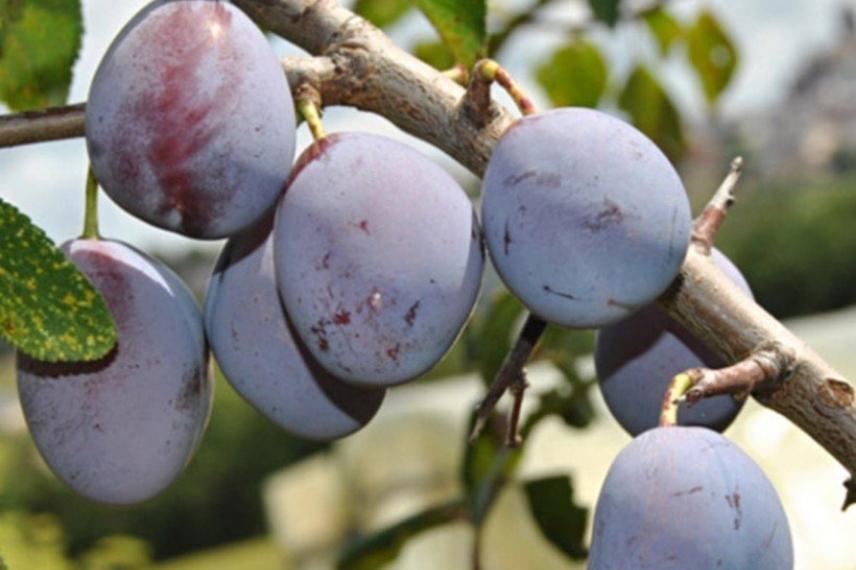
Plum tree ‘Quetsche d’Alsace’
Plum tree 'Victoria'
We like this plum tree — not like others; perhaps a little less vigorous, but very productive. It yields a mid-late harvest in early September. It produces large ovoid fruits, reddish-violet and yellow. Their semi-firm flesh holds a delightfully fragrant flavour. ‘Victoria‘ is self-fertile and proves an excellent pollinator for other varieties.
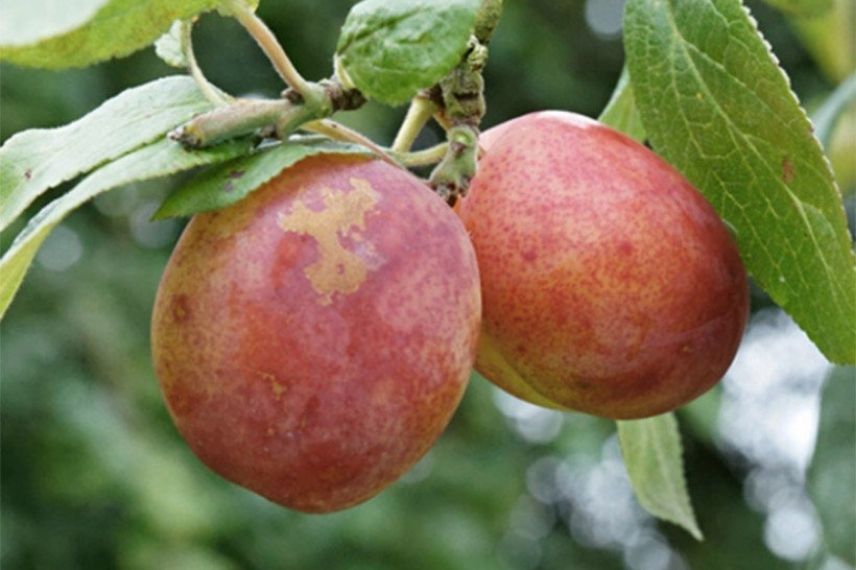
Plum tree ‘Victoria’
Plum tree 'Stanley'
The Stanley plum tree is a beautiful vigorous variety that offers a good regular crop. With early fruiting, it produces in early September large elongated purple-red fruits that turn black at ripeness. Its large plums (4.5 cm) have sweet, firm flesh and are not very juicy, ideal for making prunes, although its plums are also delicious fresh. Self-fertile, it is an excellent pollinator for other plum trees.
Dwarf plum Goldust® courod
This miniature plum tree combines advantages of standard plum trees without the drawbacks! Goldust® Courod quickly produces plums, is compact and yields fruit as large (about 4 cm in diameter) as a conventional plum tree. Self-fertile and reaching no more than 1.5 m in height at maturity, this dwarf plum variety is ideal on a balcony, on a terrace and in a small garden. It produces sweet, fragrant yellow plums harvested in August. Hardy, it can overwinter outdoors, tolerating negative temperatures down to -15 °C !
- Subscribe!
- Contents
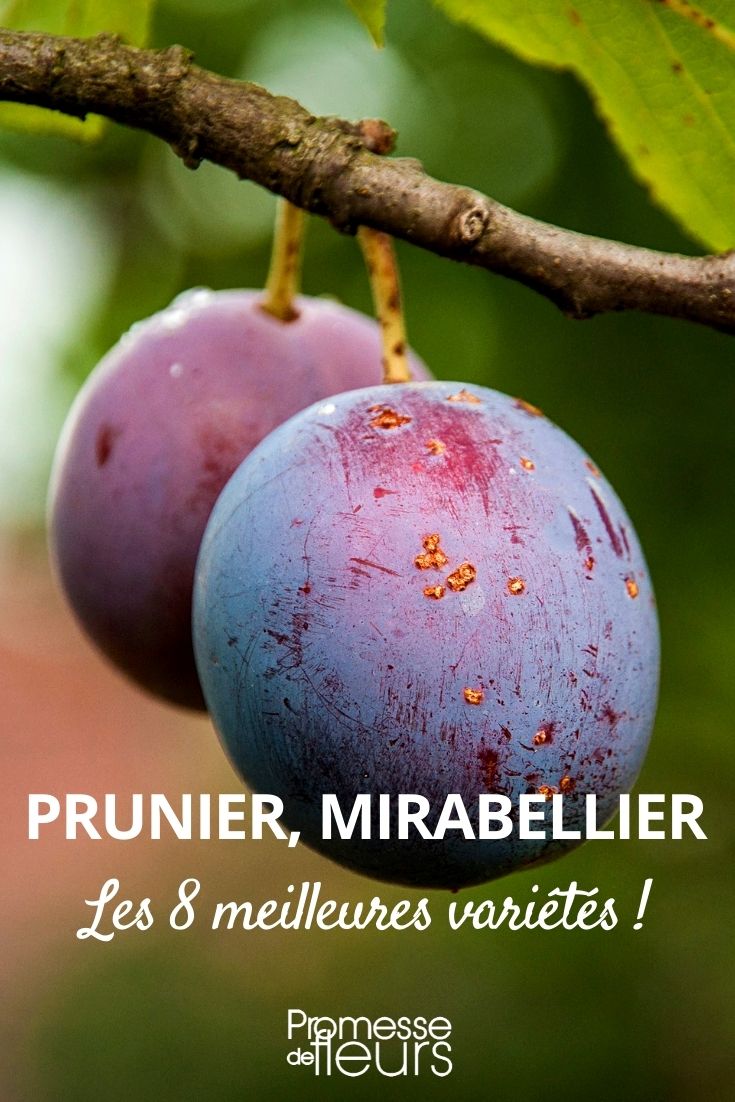































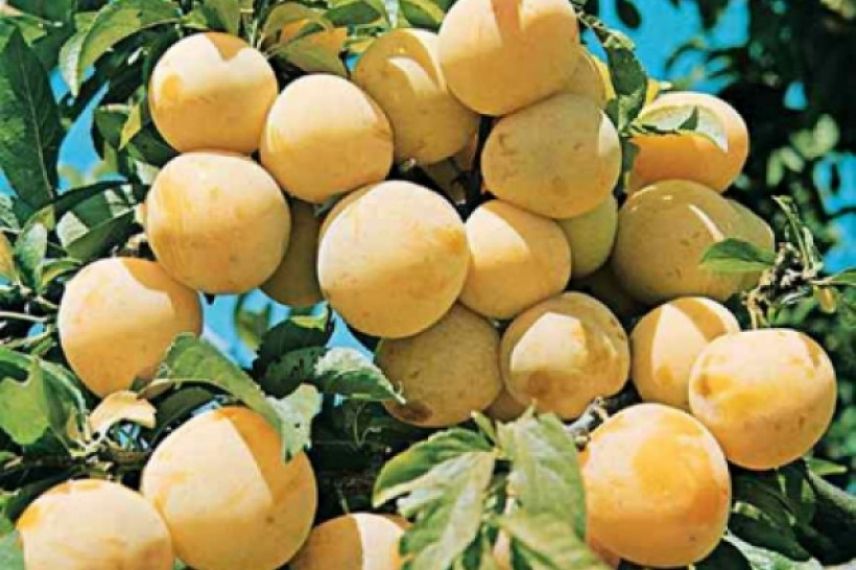
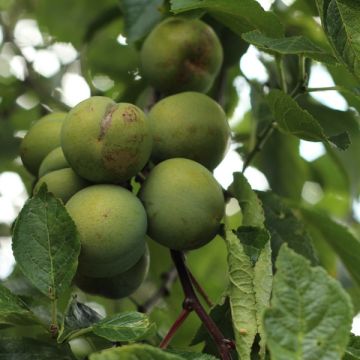
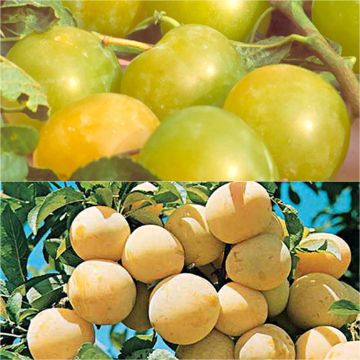
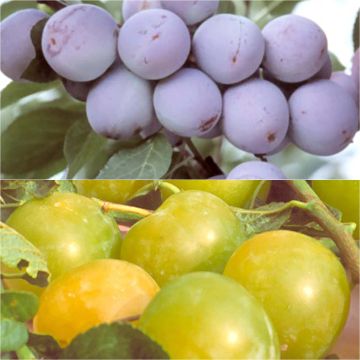

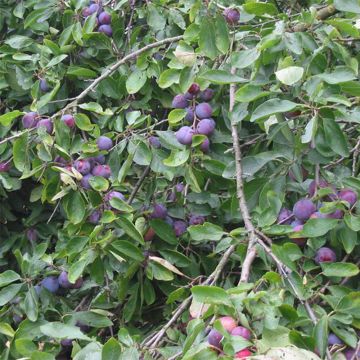
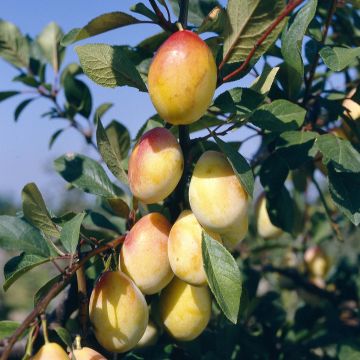
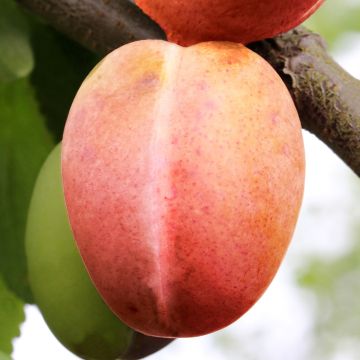
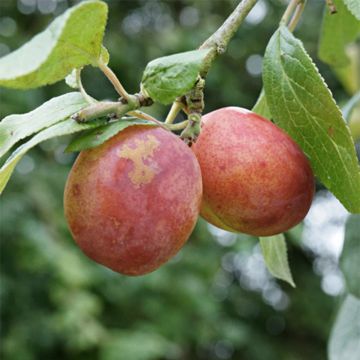
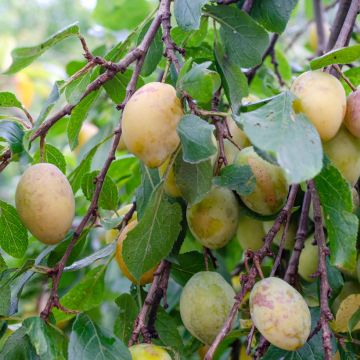
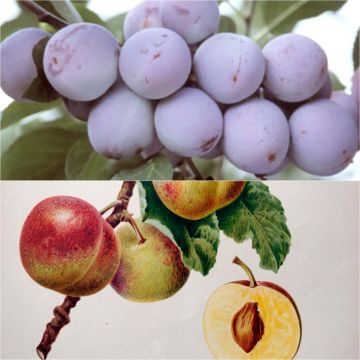
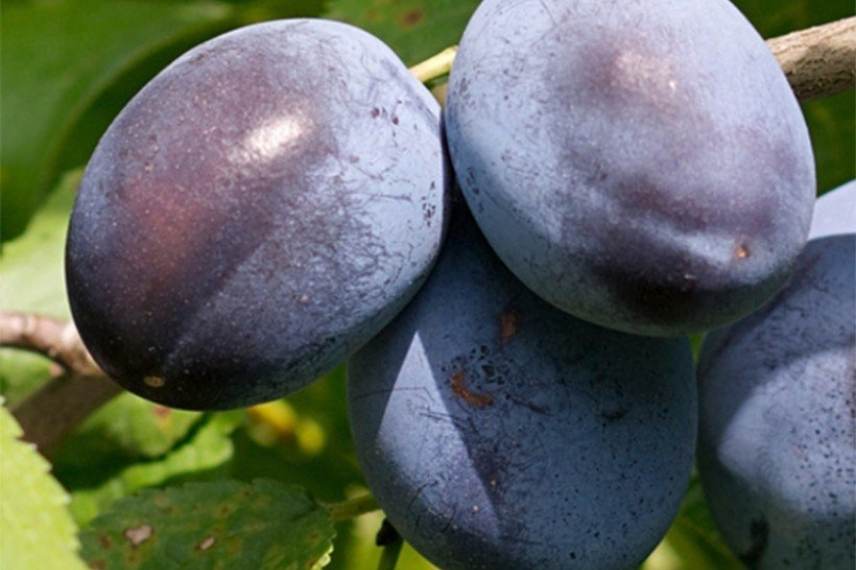
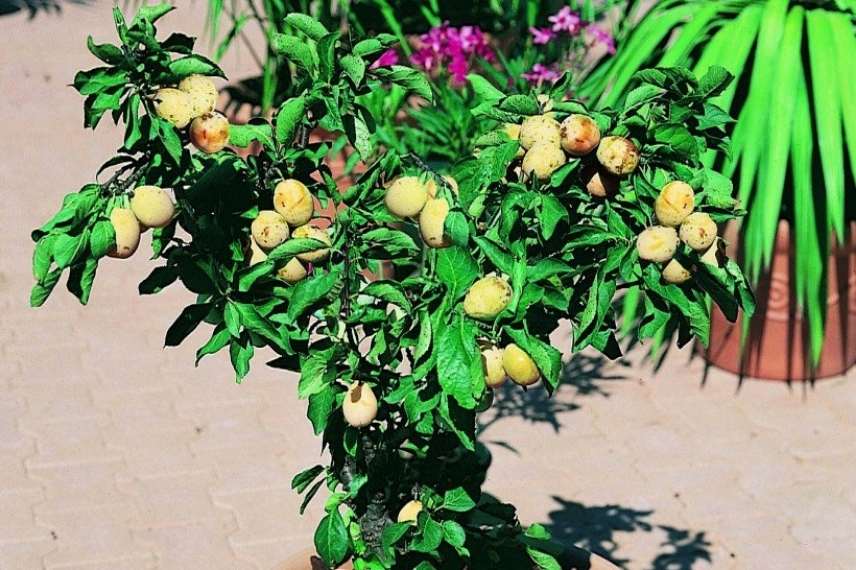
Comments